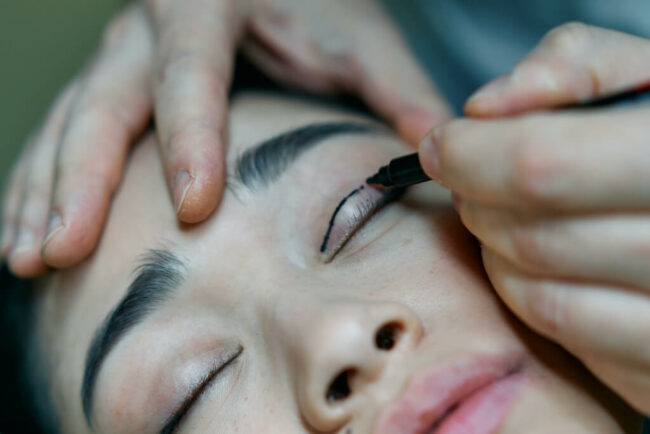The Food and Drug Administration (FDA) approved LASIK eye surgery as a safe treatment for correcting specific refractive abnormalities in 1999. This means that patients may need fewer or no glasses or contacts following their surgery. Over the last two decades, ophthalmologists have completed 600,000 LASIK procedures per year. The vast majority of these treatments improve patients’ vision and relieve them of the need to wear prescription glasses such as contacts regularly.
To this day, the Drug Enforcement Administration has approved LASIK eye surgery for patients with the following qualifying diagnoses:
- Myopia
- Hyperopia
- Presbyopia
- Astigmatism
However, there is always the chance of negative effects, and there are always risks involved. Before booking a LASIK procedure, individuals who are considering having the operation performed on their eyes should learn how the procedure is performed, understand the potential drawbacks and benefits, and determine whether or not it will improve their quality of life.
What is the Procedure for LASIK Eye Surgery?
When people talk about LASIK, they are referring to laser-assisted in situ keratomileuses. The majority of refractive defects that necessitate the use of glasses or contacts to rectify vision are caused by flaws in the cornea. As a result, laser-assisted in situ keratomileuses (LASIK) surgery was established to manually repair corneal defects and restore vision. It is done as an outpatient surgery, which means it is done in the ophthalmologist’s office, and it usually takes about ten minutes for each eye.
A thin coating of the cornea is sliced into a flap and kept back to reveal the inner cornea during the LASIK procedure. Because of the microthin nature of this flap, it will heal quickly after the surgical procedure is completed. The computer-guided excimer laser performs a procedure on the cornea known as “ablation,” which reshapes the cornea based on the specific patient’s refractive issues, which can differ from one eye to the other. The ablative process is tailored to each patient’s specific eye characteristics.
The flap will be replaced after the cornea has been reshaped; there will be no requirement for stitches, and the process of healing will begin.
Adverse Effects
The most common positive outcomes of LASIK eye surgery are improved vision and the elimination of the requirement for corrective lenses such as glasses or contacts. However, some people have reported additional negative effects, which may include the following:
- Sensitivities to light (fades over time).
- You may notice haloes, glare, or starbursts when using night vision (typically these fade within a year).
- Eye irritation (relieved by lubricating eye drops).
- Reliance on spectacles or contact lenses (typically with a prescription far lower than before).
Your ophthalmologist will examine all of the risks and benefits of the procedure, as well as your current prescription, to help you determine if you are a good candidate for LASIK eye surgery or if you should look into alternatives.
Will There Be Extreme Pain?
The procedure does not result in any unpleasant sensations. You will be awake for the duration of the treatment, which may be unsettling for some patients. This, on the other hand, shows how minimally invasive LASIK is as a surgical procedure. We use numbing drops rather than anesthesia because the procedure is quick – usually less than 30 minutes for both eyes. In addition, we provide oral medication to alleviate nervousness. This will help you relax during treatment and will also make it easier for you to fall asleep at home when you are recovering. Patients do not feel any pain or discomfort during the procedure; however, they do briefly feel small amounts of pressure from the holder that we use to keep the eye from blinking.
An Important Note
There’s nothing you can do during the procedure that will potentially harm your eye in any way. For example, if you try to blink or move your eyeball involuntarily while having surgery, the laser will track the eye and continue to carry out its function even if these movements occur. When you make a significant enough movement of your body, such as coughing, sneezing, or rearranging your body, the laser will automatically turn off and will turn back on once you are properly aligned.
After the treatment, you may realize that the microscopic flap we created to reach the inner cornea causes an uncomfortable sensation in your eyes. It feels similar to when you have an eyelash or a small irritation stuck in your eye. This usually clears up after about 5 to 6 hours, demonstrating the human eye’s impressive ability to recover quickly.
The Recovery Procedure
The majority of people require one to two weeks to recover completely from the procedure, such as the improvement or restoration of their vision. For the first few months after the procedure, vision may still be adjusting, and it may take three to six months for it to become completely stable.
Immediately After a LASIK Procedure
Your eyes will water more than usual, and your vision will indeed be blurry, in addition to any irritation or minor pain (stinging, burning, etc.) that you may be feeling. Before you leave the office, your ophthalmologist will give you the following medications to relieve your pain and speed up your recovery:
- When in pain, it is advised to take an over-the-counter anti-inflammatory and pain reliever, such as ibuprofen.
- Prednisone and other anti-inflammatory medications in drop form help reduce inflammation.
- Antibiotic drops protect against infection during the healing process of the microincision.
- Eye drops can be used to relieve discomfort while also maintaining adequate moisture and circulation in the eye.
- Depending on your doctor’s advice, you may need to use them for a few days to a few weeks at a time.
- If you experience increasing pain or a noticeable worsening of your vision in the first few hours to days after your operation, you should contact your primary care physician as soon as possible.
24 hours Following the Surgery
Your doctor will schedule a post-operative health check with you for the next day, during which he or she will investigate the incision site and ask how you are feeling overall. During this procedure, your eyes will also be examined. Even if it takes three or four days for the blurriness to go away, your vision will almost certainly be much clearer than it was when you left the office the day before.
During the Initial Few Weeks
Your ophthalmologist will already be acquainted with the specifics of your lifestyle, such as the activities you participate in, where you work, and so on, before the treatment. Following your LASIK eye surgery, your doctor will advise you on what you should and shouldn’t do in the immediate aftermath of the procedure based on what he or she has learned.
Consider the following
- You should rest for the first day or two after the procedure, but after that, you should be able to resume low-impact workouts and sports that do not put your eyes at risk of injury or infection.
- Before going for a swim in any body of water, including lakes, pools, or the ocean, you should wait until your incision has completely healed.
- It is critical to wait at least a week before actually applying makeup or using fragranced moisturizers on or around the eyelids and eyes to avoid irritation or infection. This rule applies even after the procedure is finished.
- Your surgeon will notify you when you can resume your normal activities, and he or she will be available to speak to you during that time if you have any concerns or questions.
In the Months and Weeks Following LASIK Surgery
Your eye doctor will want to see you over several follow-up appointments in the days, weeks, and months following your LASIK procedure to ensure that your vision has returned to normal. You won’t know whether the procedure has eliminated or reduced your need for corrective contact lenses or glasses for at least six months.






